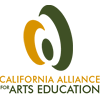The Power of a Wish List
 The Challenge: How to hold your district accountable for what's in the LCAP
The Challenge: How to hold your district accountable for what's in the LCAPThe Strategy: Keep a wish list, and keep talking about it!
The Story: As a longtime PTA parent and local organizer for the California Alliance's Local Advocacy Network, Courtney Fielder was educated about California's new funding law and took an active role in her school district's Local Control Accountability Plan (LCAP) meetings. But she had something else too: a wish list.
Even before Proposition 30 passed, bringing much needed funding back into California schools, and before the Local Control Funding Formula (LCFF) passed, guaranteeing parents, students and educators a place in new locally determined priorities and budgets, Courtney had been thinking about how Capistrano Unified School District might grow its arts program.
"It's a big district. We have 34 elementary schools, not to mention our middle and high schools," says Courtney. "We needed investments that would lead to systematic, sustainable arts investments and programs."
At the top of her list was a Visual and Performing Arts (VAPA) Coordinator.
According to Sibyl O'Malley, Director of Communications and Community Engagement for the Alliance, "A VAPA coordinator can play an important role in helping school districts to be systematic, to increase efficiencies and to use best practices in nurturing an arts program. Ideally, they know what is happening at all the schools in the district and can help address issues of equity too."
While Courtney cautions, "There is no one formula that will work everywhere," a VAPA coordinator and an arts plan are often the best place to start. Both are best practices for creating a foundation on which to systematically build a quality, equitable arts program district-wide.
As active participants in the LCAP process from the beginning, Courtney and other PTA parents helped ensure that the arts were a part of Capistrano's plan. But, what they hoped would be funding for a full-time VAPA Coordinator was instead half a position split with another discipline. They were concerned it might be hard to find a candidate with expertise in both areas.
So Courtney stayed in touch with district leaders and communicated the value of a position for each discipline. As a result, the district agreed that each dispipline was too important to share. In the following year's LCAP, a full-time VAPA coordinator was added. When the district put together a hiring committee for the position, Courtney was invited to join it.
"The first time I met with him, he said he wanted our district to have the best arts program not just in the county, but in the state. I couldn't have wished for more!"
Why a Wish List
According to Courtney, "When you meet with district leaders, it's always critical to listen first. If you listen, you may find that they are already on board. And if not, it helps you to understand their concerns, so that over time you can address them!"
What a Wish List Isn't
"Believe it or not, you may get asked, what do YOU want to see happen? So for years, I've carried around a wish list and talked about it. I didn't demand the things on the list, I just kept everyone in the loop and kept sharing these hopes. So I kept talking about it, and over time, other people began to 'own' the list."
The Magic of a WIsh List
Tammie Blackmore from Riverside USD confirms this. "When I first started, people weren't too sure about the idea of an arts plan, they didn't want to make promises they couldn't keep because of funding. But over time they've become champions of the idea!"
Courtney's WIsh List
- VAPA Coordinator
- Re-do Arts Plan
- Restore K-3 music
- Professional development of elementary school teachers to incorporate arts
- Retention of middle school arts electives (so when teachers retire, their positions are not eliminated)
- Block visual arts teachers
Resources from the California Alliance for Arts Education
The Local Advocacy Network provides professional development, advocacy expertise and communications tools to support arts education advocacy in local communities. Register for our free webinar on April 14 to learn more: https://attendee.gotowebinar.com/register/2076972340289815555
The Arts Planning Initiative, launched by the California Alliance for Arts Education, provides strategic assistance, high-caliber facilitation and financial stipends to help school districts and counties complete an arts plan using the best tools available.










